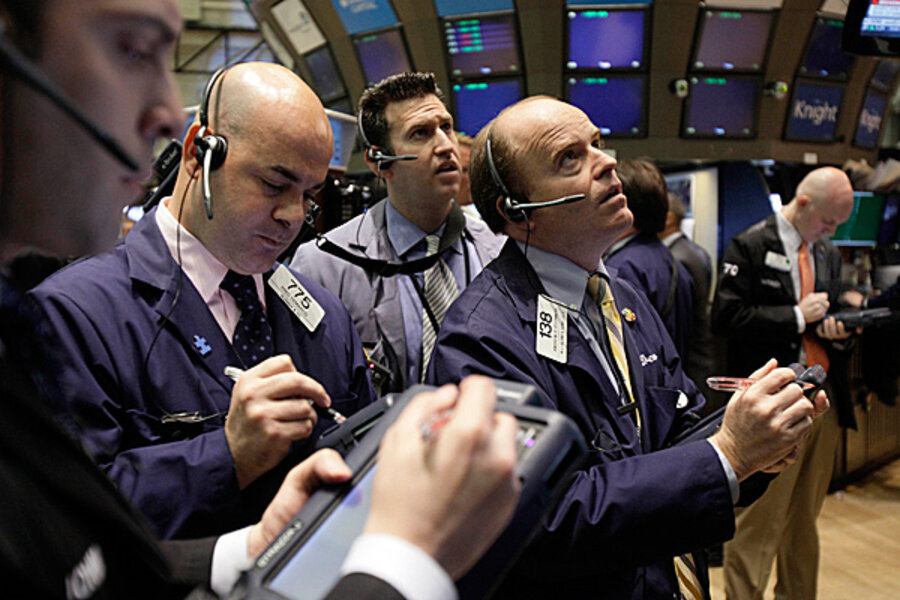Dow average shoots up after Europeans agree on Greece debt plan
Loading...
| New York
Investors are relieved to see European leaders agree on a $1 trillion financial stability plan that appears to give European debt-laden nations, such as Greece and Portugal, time to get their finances in order.
Wall Street’s initial enthusiasm for the Greece debt plan translated into a major rally on Monday morning when the Standard & Poor’s 500 index and the Nasdaq index gained more than 4 percent. The Dow Jones Industrial Average had popped by more than 340 points as of early Monday afternoon.
“Investors sold last week because they felt the European Union was too far behind the curve on fixing their problem,” says Sam Stovall, chief investment strategist at Standard & Poor’s Equity Research in New York. “They assumed the worst, but now investors are pleased we are possibly ahead of the curve.”
Concerns had mounted last week that the debt problems in Europe might spill over to world markets – similar to how the US subprime crisis froze the world’s credit markets in 2008. “We were worried about a cascading effect,” Mr. Stovall says.
But it isn’t certain that problems in the financial markets would have an actual effect in the United States. Exports represent only 11 percent of US gross domestic product, and only 20 percent of that goes to Europe.
“You weren’t going to lose the whole $200 billion in exports. Even in a depression, you were looking at losing maybe 50 percent,” says Jay Bryson, international economist at Wells Fargo Economics in Charlotte, N.C. “The real potential was for a financial crisis, and it looks as if a credit crunch has been averted for now.”
However, some commentators think Wall Street is celebrating too soon.
“The underlying problems have not gone away,” says Sung Won Sohn, a professor of finance at the Smith School of Business & Economics, California State University, Channel Islands. “Also, the European Union and the [International Monetary Fund] will not hand out money willy-nilly, and so I think generally this crisis will continue.”
Still, the European plan may give the nations that owe large debt payments soon time to cut their budgets.
The trillion-dollar plan will provide a backstop to investors, much like the US Treasury’s Troubled Asset Relief Program (TARP) did during the US subprime mortgage crisis, Mr. Bryson says. “The Europeans are taking a page out of the TARP program,” he says.
“The hope among European leaders is that they won’t have to spend a euro cent, but just put into place a backstop so private investors roll over the debt,” says Bryson. “But in a worst-case scenario, they will have to stand behind the governments.”
Professor Sohn, however, remains skeptical: Many European governments will find it politically hard to make changes, he thinks, because they count on the support of labor unions. Also, he says, some nations are less likely to enact tough new budgets, now that the possibility exists for a rescue.
“The market is getting too excited,” he says.
But Joel Naroff of Naroff Economic Advisors in Holland, Pa., says the market’s sharp gain was a “relief rally” and an “unwinding of the sharp losses from last week.”
“We’re basically back to where we were when it looked like the Europeans would let Greece go,” he says. “Does this lead to another 1,000 points on the Dow or a few hundred on the Nasdaq? I don’t think so.”
He adds, “But for now, we’re all relieved Europe wouldn’t do something silly.”
Related:





